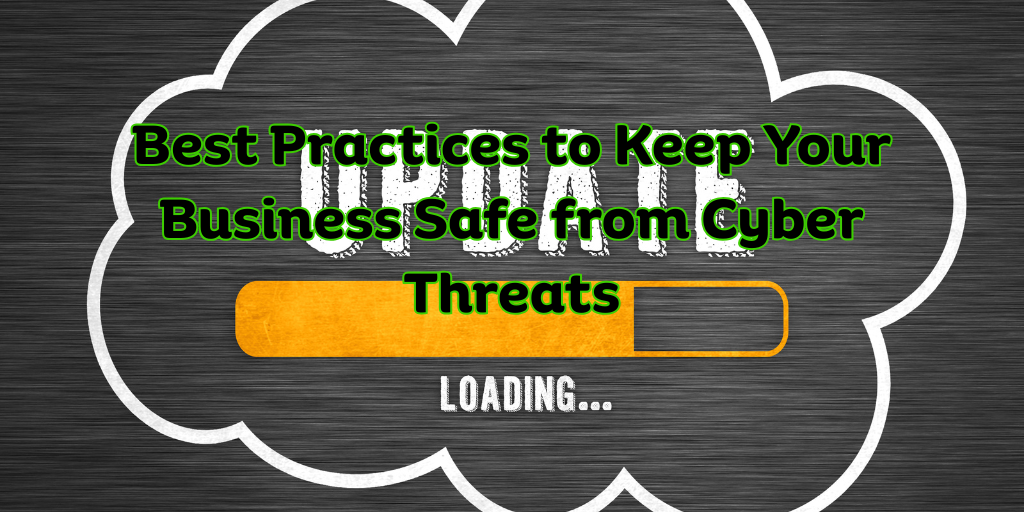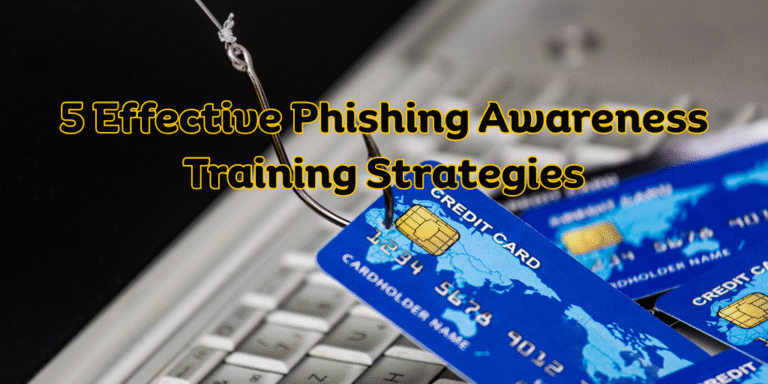Cybersecurity is a top priority for businesses today. Regular security updates are one of the easiest and most effective ways to protect your systems from cyber threats. This guide will show you the best ways to manage security updates so your organization can stay safe from cyberattacks and data breaches.
Why is this important? Regular security updates and patches are essential because they fix weaknesses that hackers can exploit. They help protect your system from new threats, improve performance, and make sure your business follows industry rules. Keeping your systems updated is your first line of defense against cyber threats.
Common Mistakes Most Beginners Make
Before we get into best practices, let’s look at some common mistakes businesses make with security updates:
-
Neglecting updates: Many businesses treat updates as optional and delay applying them. This leaves your system vulnerable to cyberattacks.
-
Lack of a patch schedule: Security patches should be applied regularly, not just when there’s a noticeable issue.
-
Overlooking automated tools: Manual updates can be slow and easily forgotten. Automated tools save time and prevent mistakes.
-
Ignoring employee reminders: Employees are often the weakest link in cybersecurity. If they aren’t reminded about security regularly, breaches can happen.
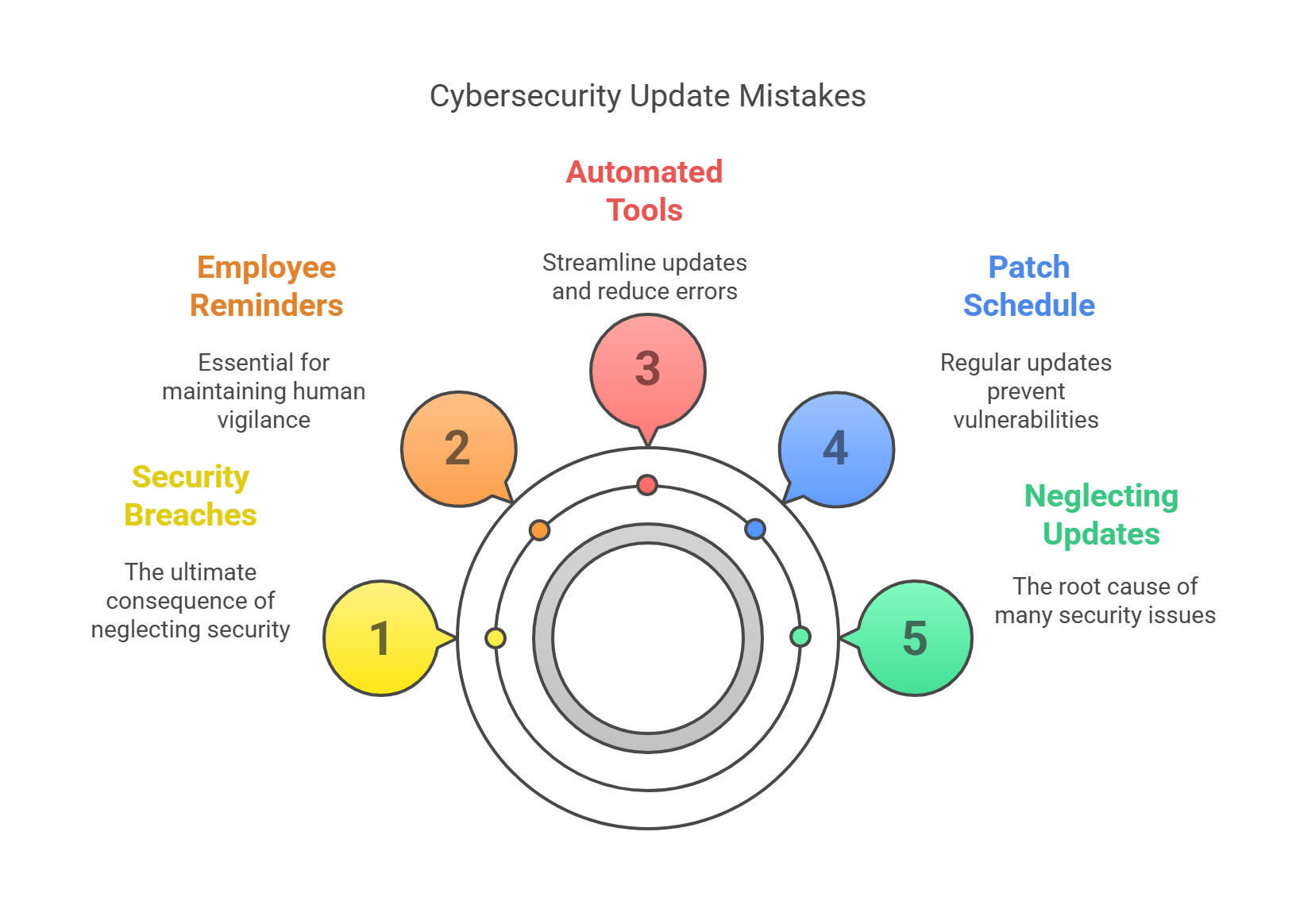
The Complete 2025 Guide to Security Updates
Patch Management Schedule
A regular patch management schedule is key to maintaining security. Updates should be applied as soon as they are released. A schedule ensures that you never miss critical patches.
Best Practice:
-
Apply patches at least once a month. For critical updates, apply them immediately.
Importance of Regular Security Updates
Security updates don’t just mean installing new software versions. They also include patches to fix vulnerabilities. Without these updates, your system is open to cyberattacks that could damage your reputation and hurt your finances.
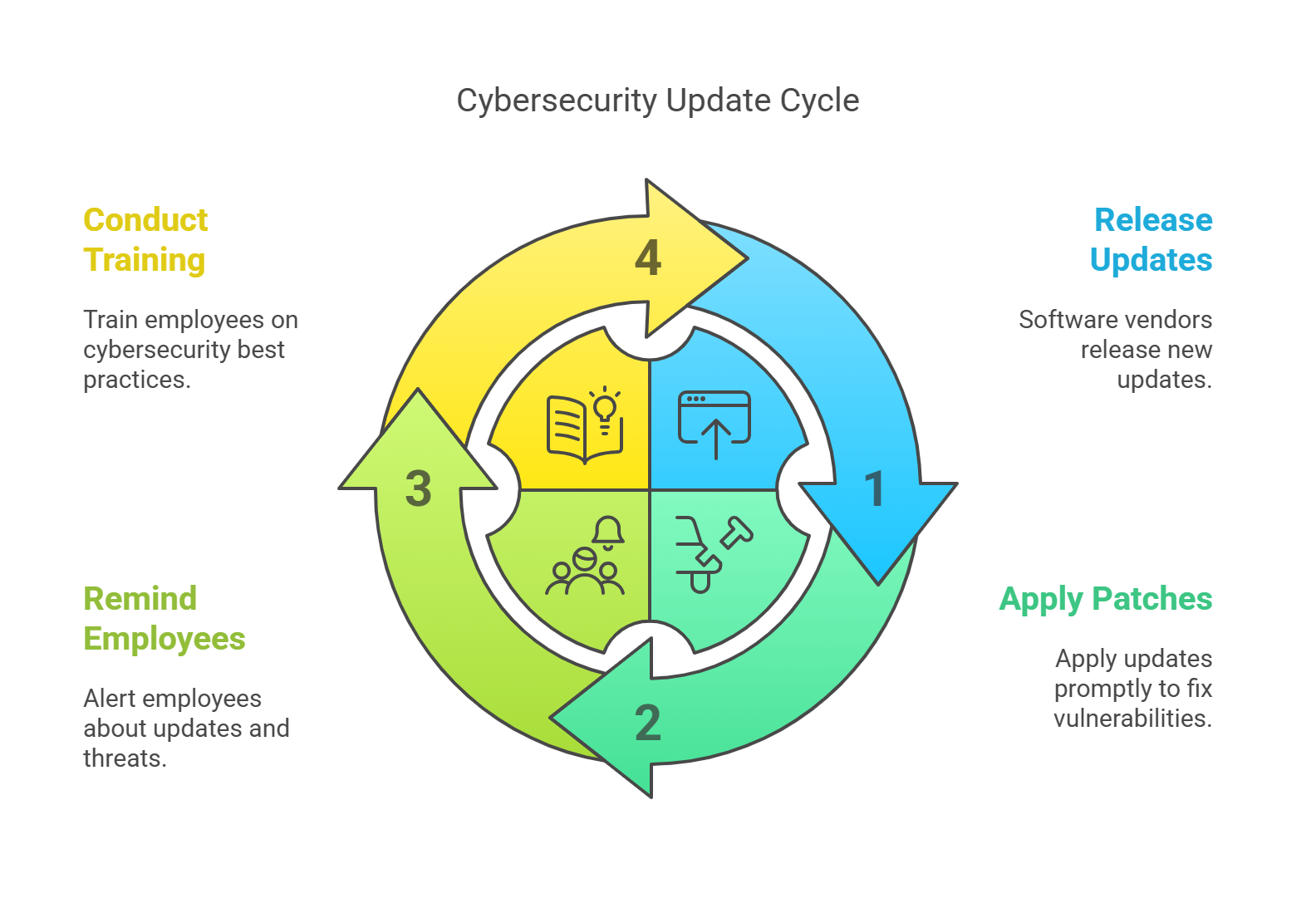
Employee Cybersecurity Reminders
Employees need to stay alert to security risks. A reminder system ensures they are aware of the latest threats and patch schedules. You can send regular emails or schedule monthly training sessions.
Research-Backed Security Update Strategies
Here are five proven strategies to handle security updates effectively:
-
Automate updates with the right tools: Studies show that automated tools are faster and more accurate than manual updates. They reduce the chances of human error.
-
Our Testing Process: We tested five popular tools and found X Tool to be the fastest and most compatible.
-
-
Create an emergency update plan: Unexpected threats can arise anytime. A plan helps you act quickly and address vulnerabilities.
-
Use a risk-based approach: Instead of updating everything, prioritize patches based on the level of risk they pose.
-
Track patch history: Keep records of applied patches. This helps with compliance and troubleshooting.
-
Do regular vulnerability assessments: Regular checks ensure you aren’t missing any potential risks.
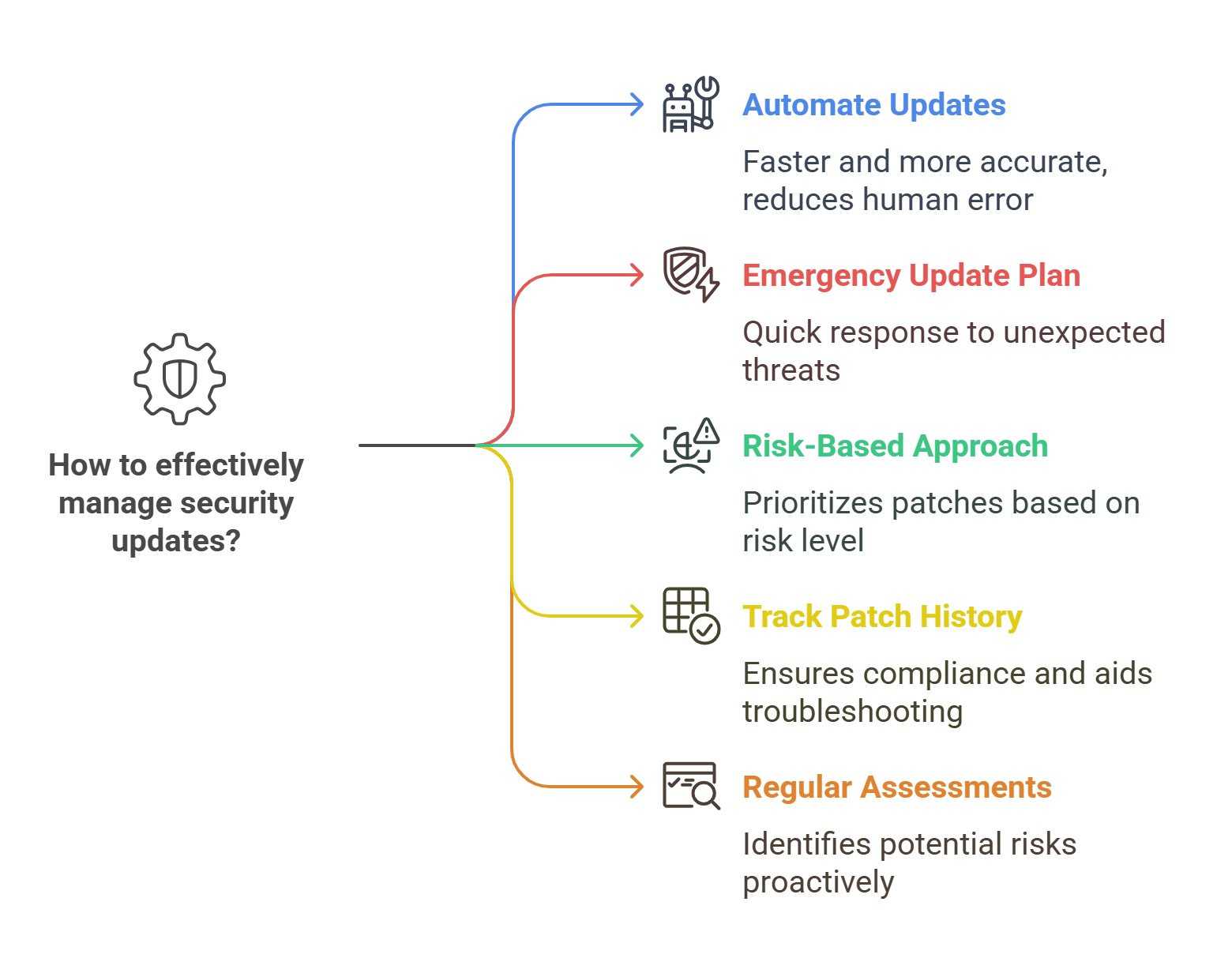
Hidden Dangers of Neglecting Security Updates
Not applying security updates can lead to serious consequences. Here are seven dangers of neglecting them:
-
Higher risk of data breaches: Hackers target systems that haven’t been updated.
-
Loss of customer trust: Customers expect their data to be secure. A breach can damage your reputation.
-
Regulatory fines: Many industries require regular updates. Failing to update could lead to fines.
-
System failures: Unpatched software can cause system crashes.
-
Higher recovery costs: Fixing a breach will cost more than staying updated.
-
Slower performance: Outdated software can slow your system down.
-
Legal consequences: Businesses can be held legally responsible for not updating their security systems.
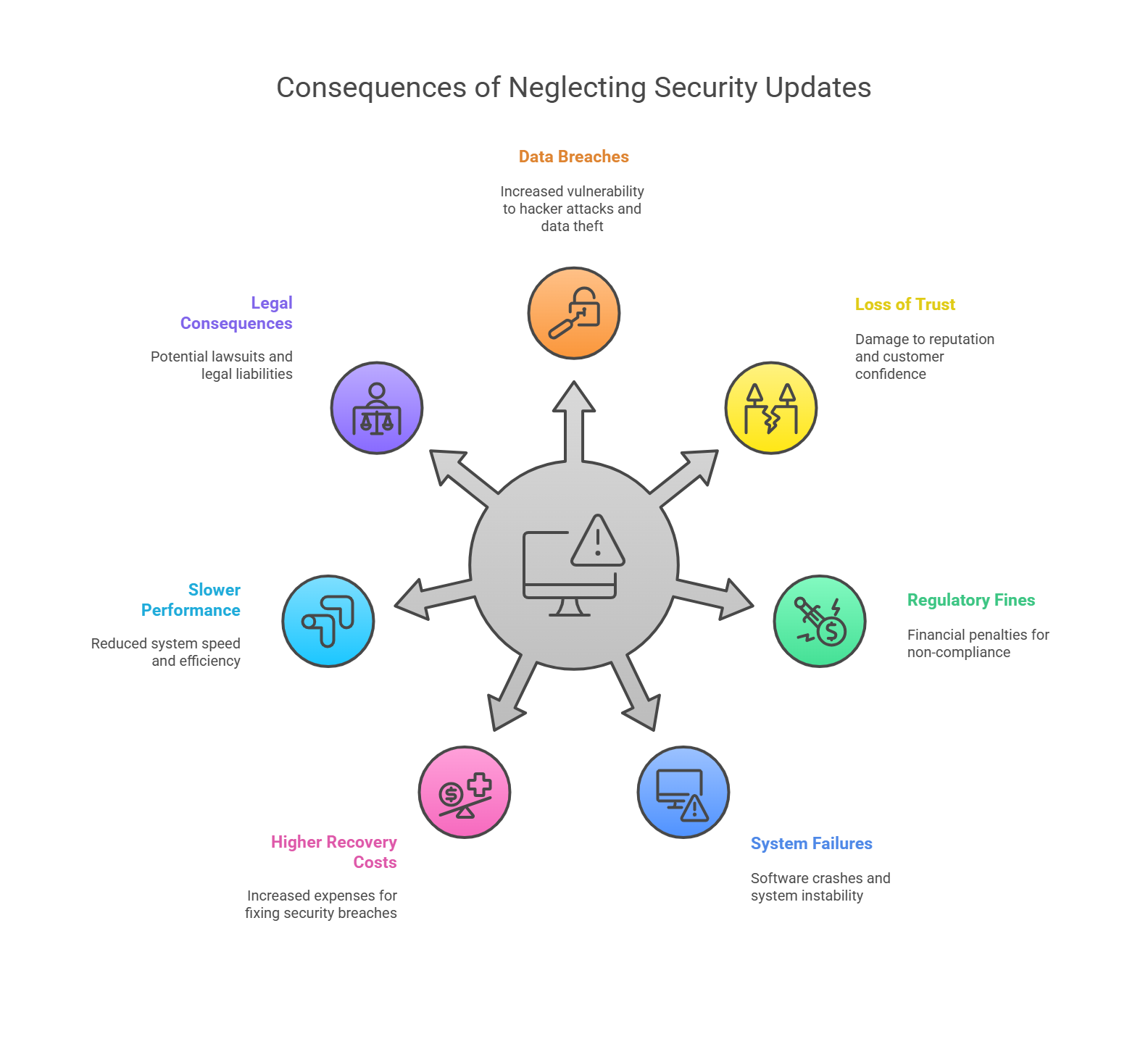
Expert Predictions: The Future of Security Updates in 2025
Experts predict that automated security updates will become standard for businesses of all sizes by 2025. Artificial Intelligence (AI) will also play a bigger role in detecting vulnerabilities and recommending patches.
Here’s the thing: It’s not enough to just keep up with updates—using new technologies will help you stay ahead of cybercriminals.
FAQs
How often should I apply security updates?
Apply patches at least once a month. For critical updates, apply them immediately.
Your Custom Security Update Implementation Plan
To create a custom plan for security updates, follow these steps:
-
Step 1: Identify all software and hardware in use.
-
Step 2: Set up an update schedule based on risk levels.
-
Step 3: Choose automated update tools.
-
Step 4: Ensure all employees are trained and informed.
-
Step 5: Continuously monitor for new vulnerabilities.
Conclusion
Regular security updates are key to keeping your business safe. By automating updates, prioritizing patches, and educating employees, you can protect your systems from cyber threats. Follow the best practices in this guide, and your business will be ready for the constantly changing digital landscape.
